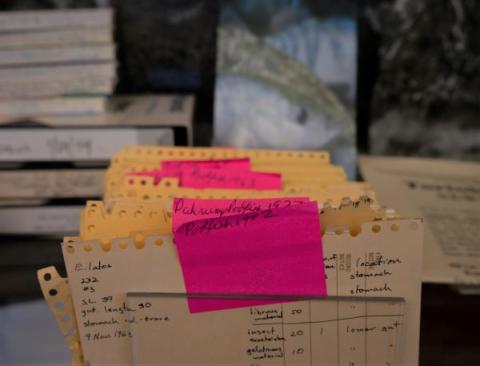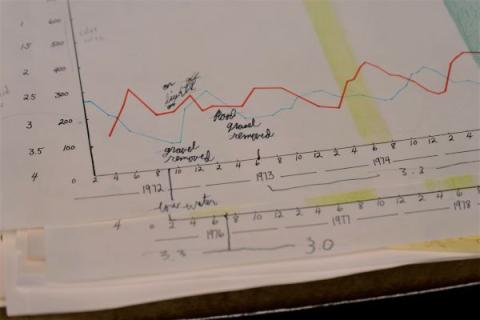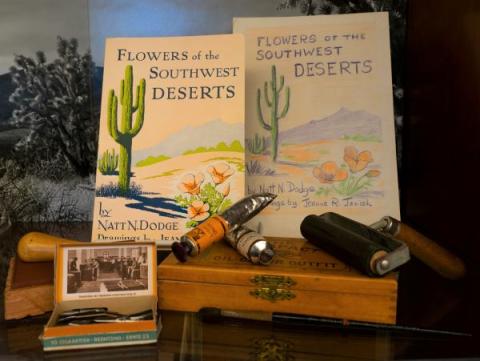

“The wild places are now seen not as an enemy but as a vanishing resource. As the neon lights glare even brighter and the miles of paved roads wind ever onward, the chance of escape to the solitude of the roadless area, an unspoiled forest or an untamed river, become ever more precious. Congress recognized the importance of preserving this chance for today’s Americans and for all generations to come when it passed the Wilderness Act of 1964.” - New York Times, April 23, 1967
Although known for bright neon lights, busy casino floors, and a rapidly expanding urban population, Southern Nevada is also home to some of the world's most rare plant and animal species. The “Shared Lands: Documenting Our Region’s Environment” exhibit highlights materials held in UNLV Special Collections and Archives (SCA) that are produced by activists, artists, and researchers who are dedicated to protecting the land and species that make Nevada a unique place.
For example, the Devils Hole pupfish exists in only one place on earth: a cavern two hours west of Las Vegas. About four hours from the city, Tiehm's buckwheat, a rare wildflower, grows in the Silver Peak Range of Esmeralda County on just 10 acres of land and nowhere else in the world.
For thousands of years, Native peoples have been caretakers of both land and species, yet they must fight to set aside even the most sacred of spaces. With Southern Nevada’s explosive growth, these spiritual places and natural habitats are in peril as cities and corporations expand into the surrounding desert. Politicians, activists, tribal members, and members of surrounding communities are actively working to establish a region in Southern Nevada as a National Monument in order to permanently protect land sacred to Native peoples of the region. The proposed Avi Kwa Ame National Monument area contains some of the most biologically diverse and culturally significant lands in the entire Mojave Desert. Avi Kwa Ame is the Mojave name for Spirit Mountain and the surrounding landscape. The mountain, located on the eastern boundary of the proposed monument, and the nearby area are sacred to twelve Native American tribes.
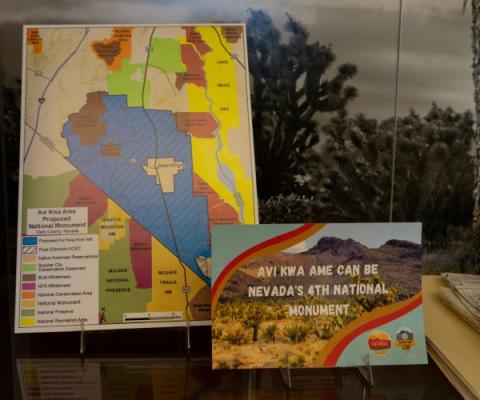
From cacti found on the desert floor, to bristlecone pines living for centuries on the state’s highest peaks, Nevada’s environmental diversity is documented in a number of UNLV SCA collections in a number of ways. Environmentalists and researchers study and fight to protect our lands and species, while artists draw inspiration from the unique landscapes of the Silver State. Collections include scientific data created by professors and researchers, correspondence, government publications, and books focusing on our region’s environment and species. UNLV SCA also has the personal papers and artwork of a number of artists who are inspired to write poetry, photograph, and paint what they experience in these unique spaces.
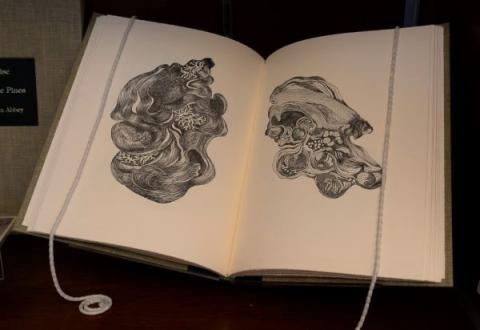
The “Shared Spaces” exhibit is located in Lied Library on the 3rd floor next to Special Collections and Archives. For more information about the materials in this exhibit and other related materials, please visit the exhibit’s Library Guide.


